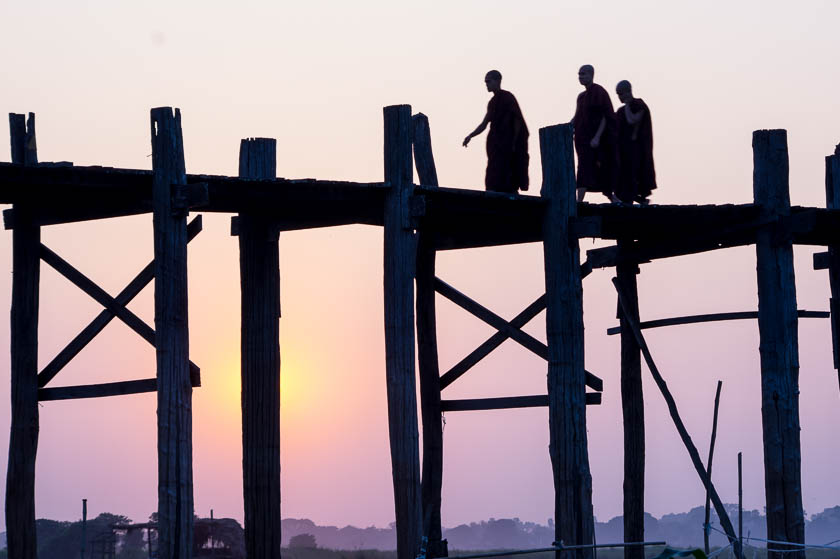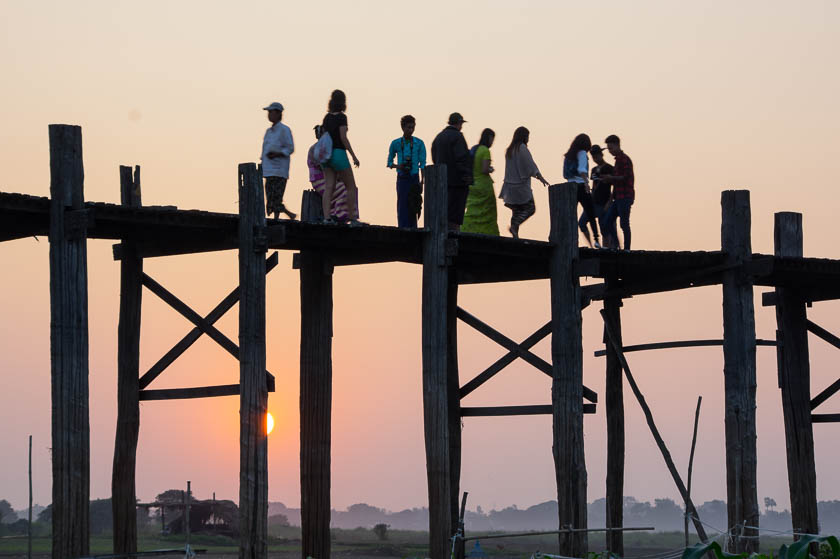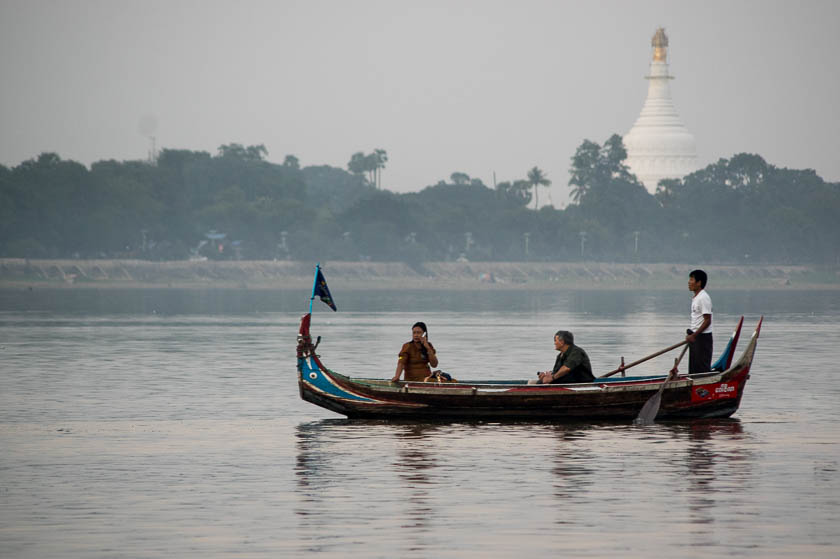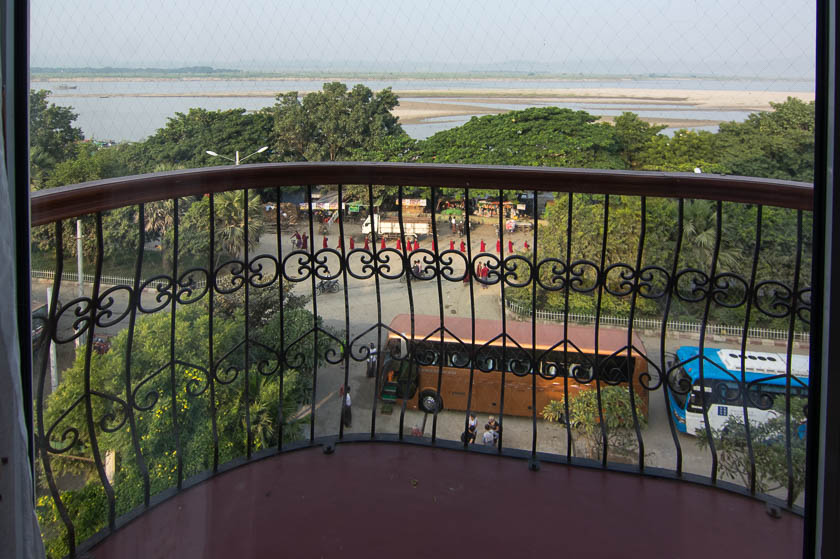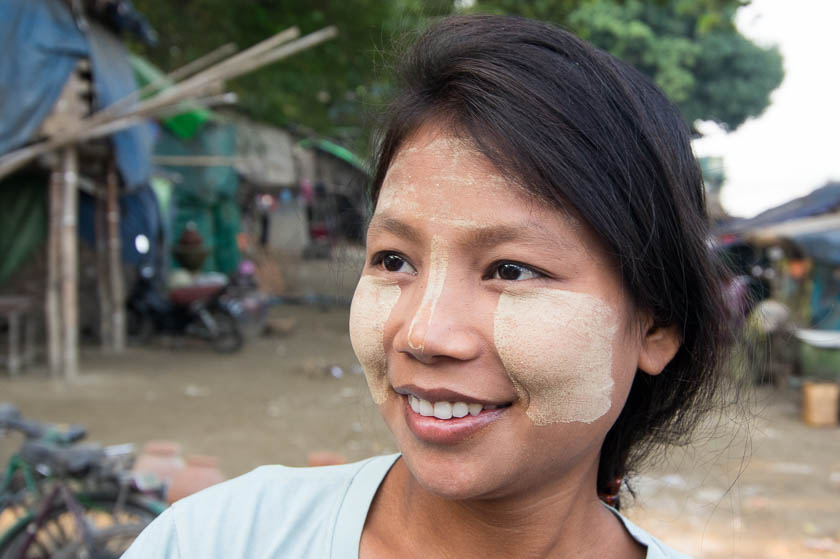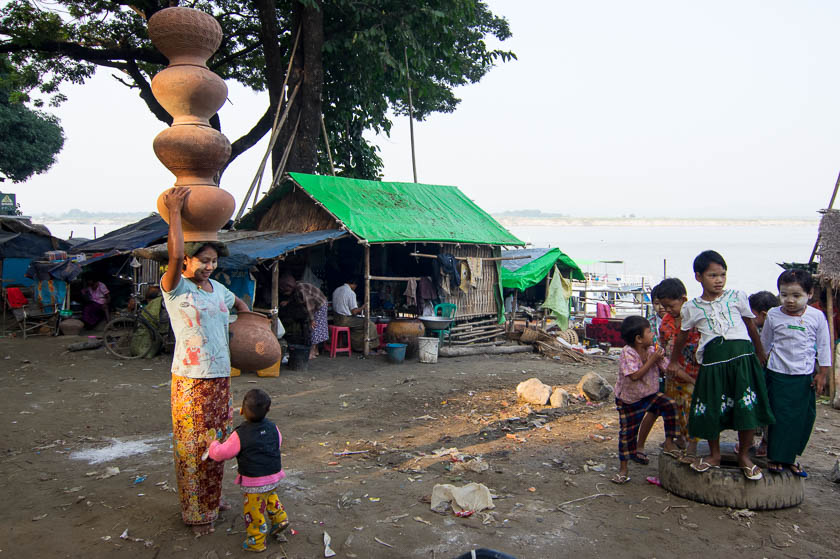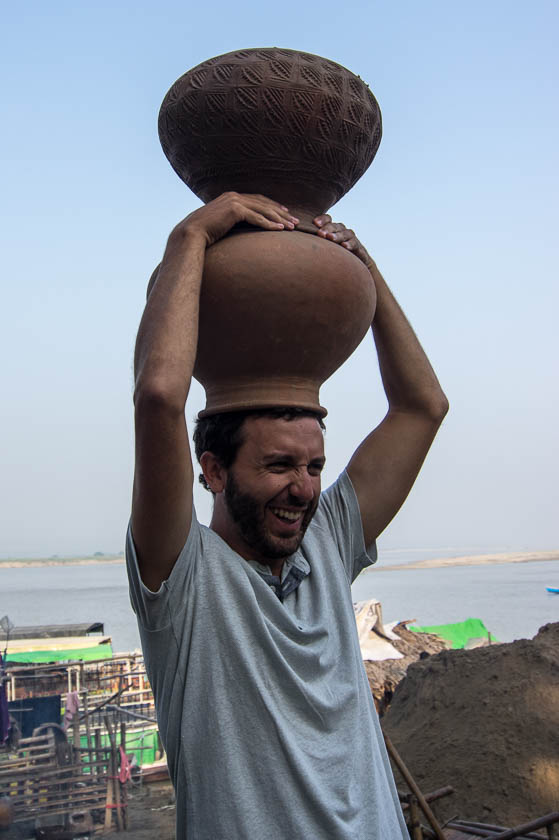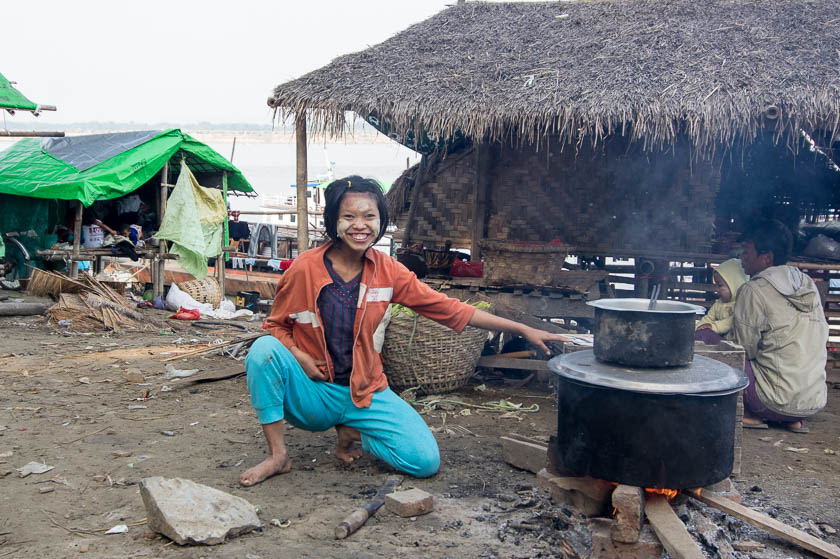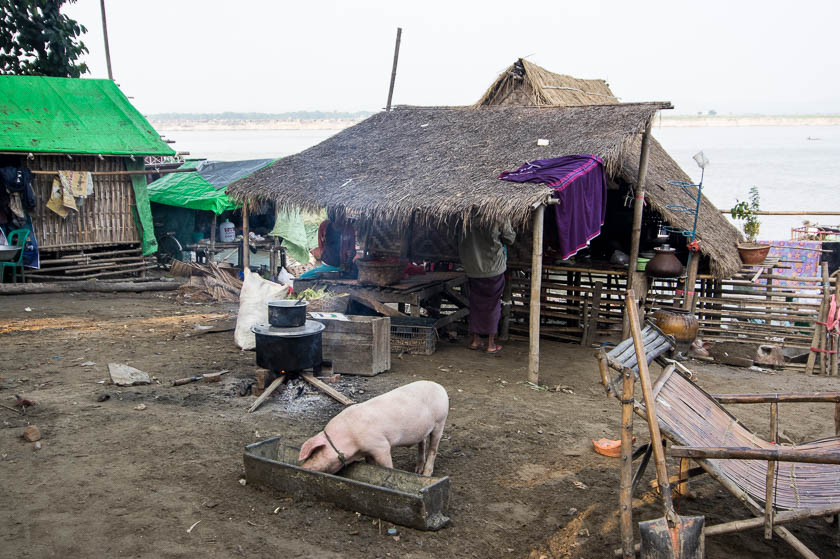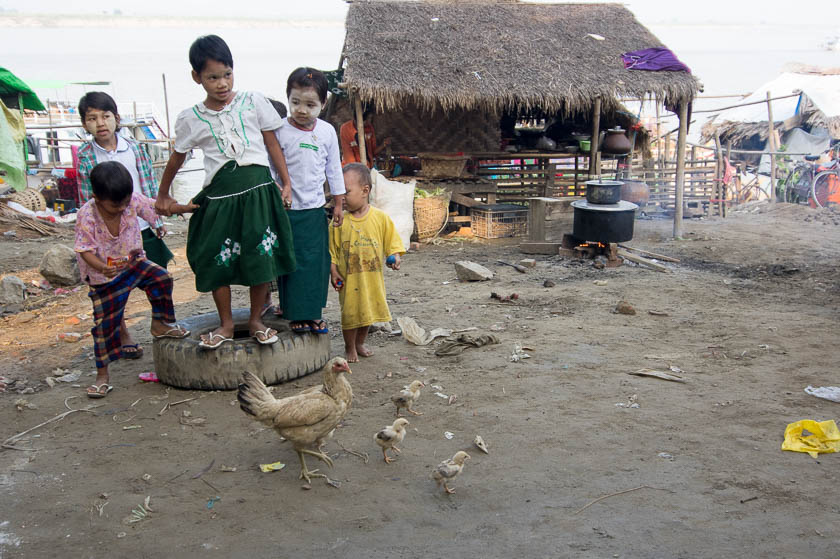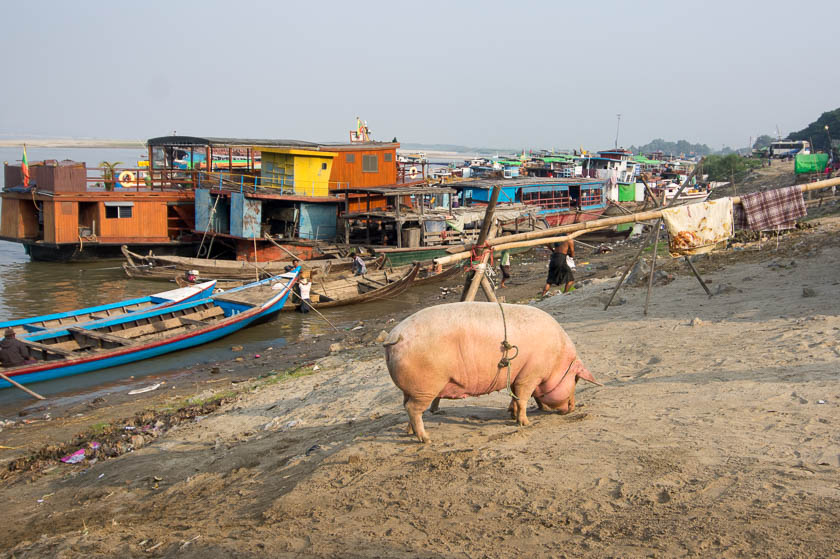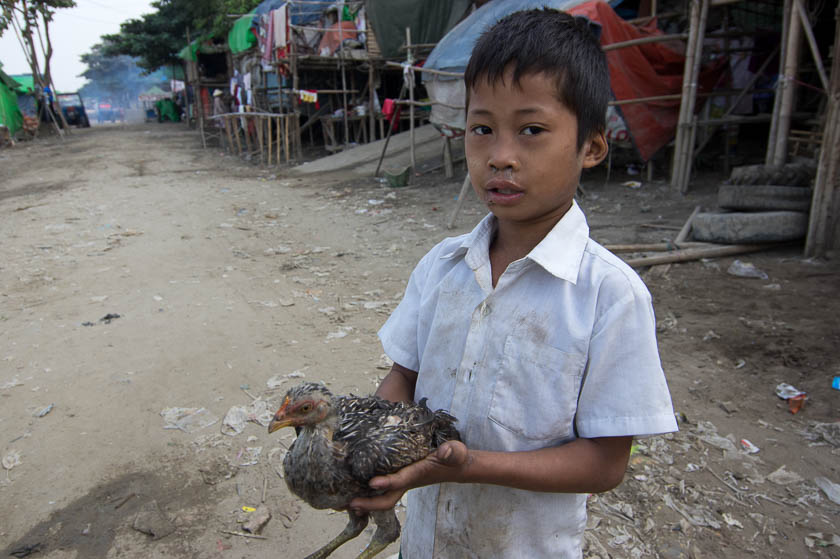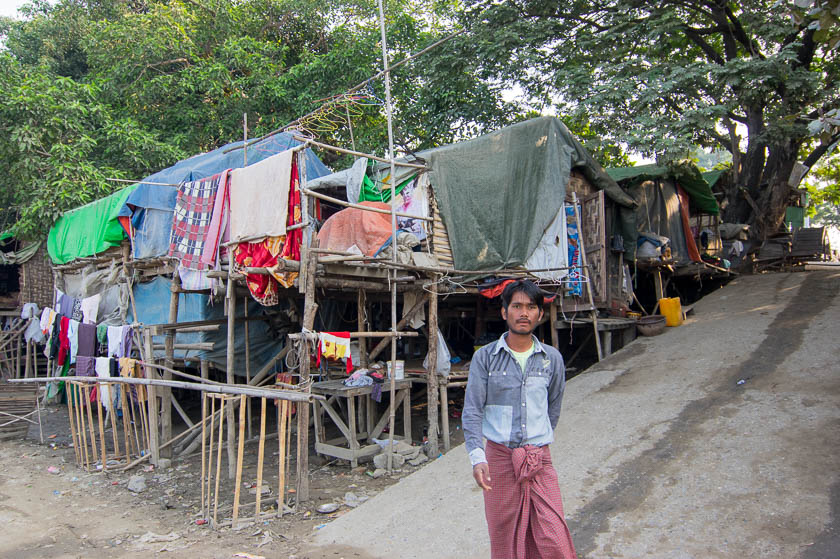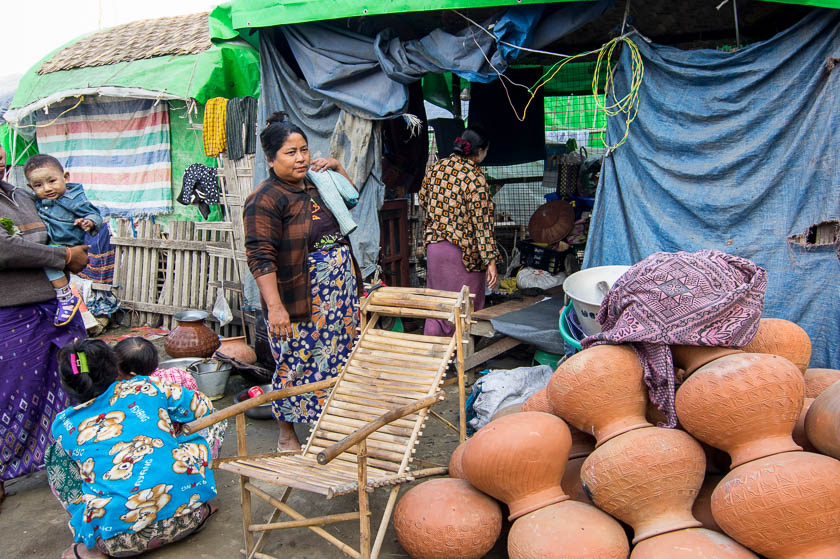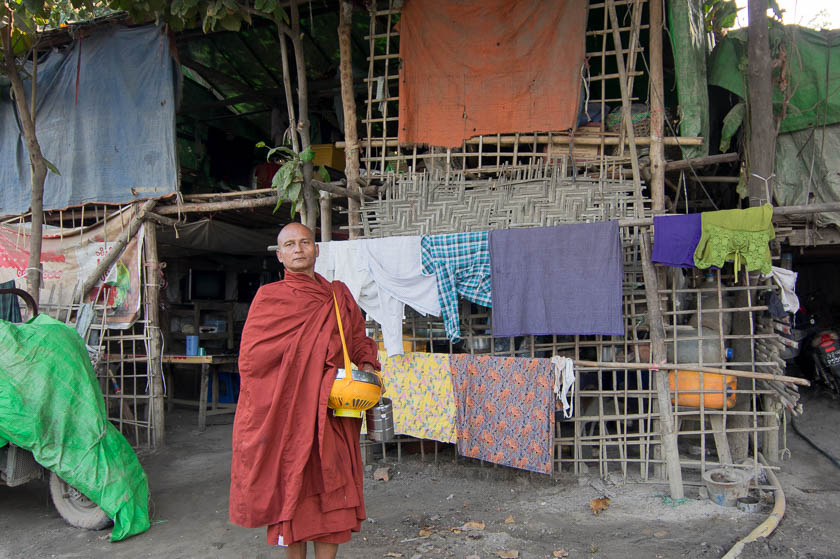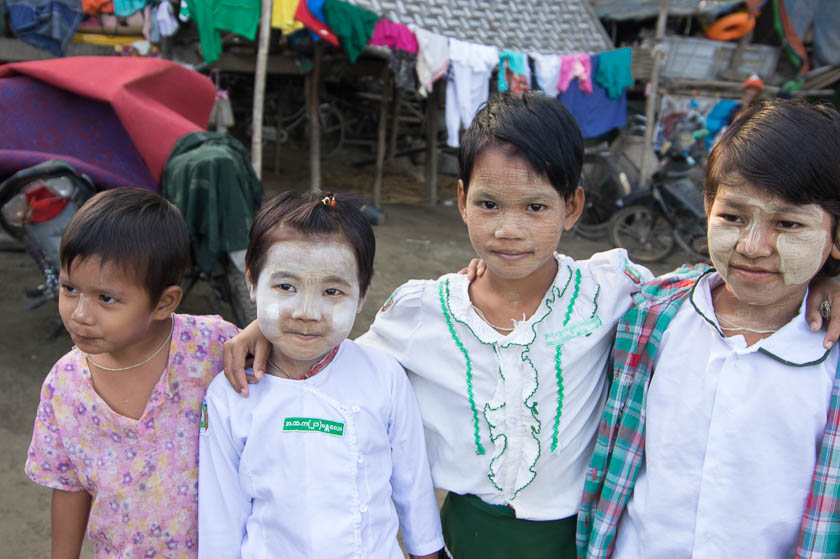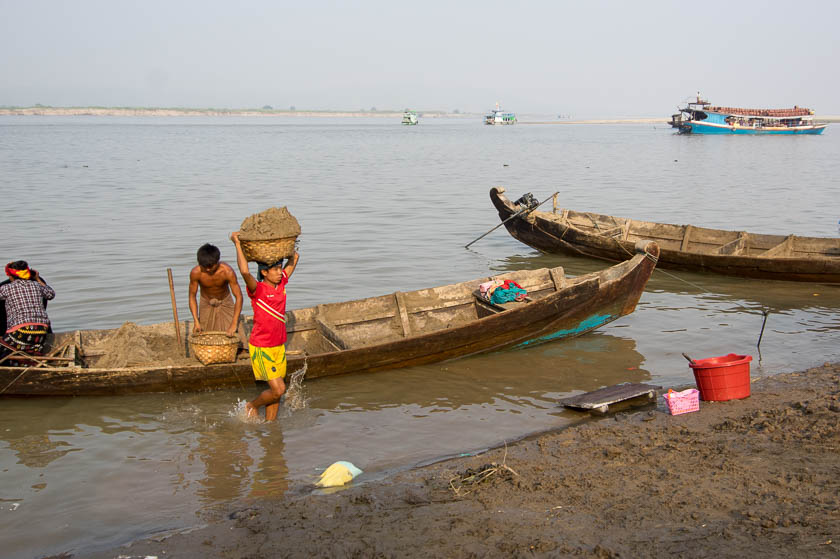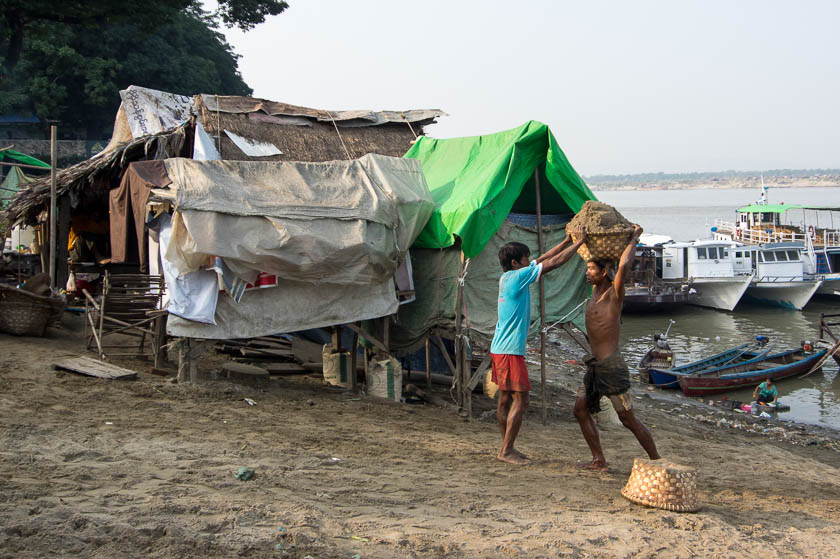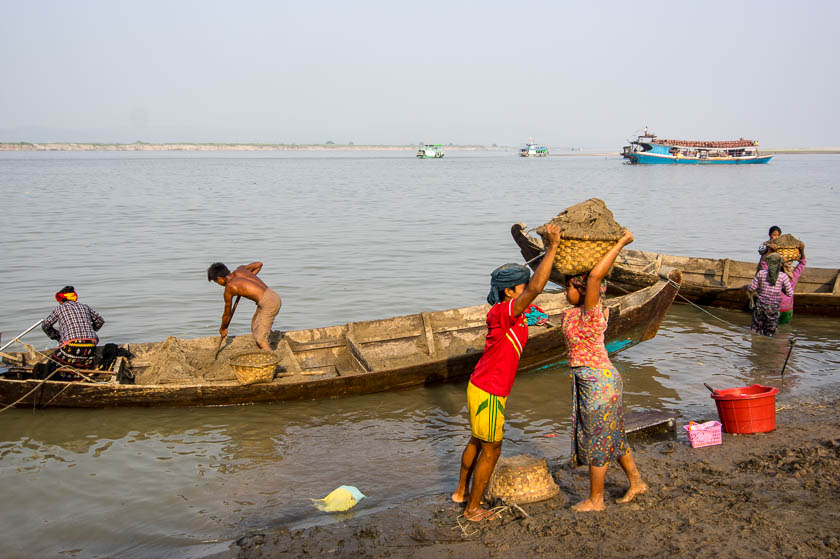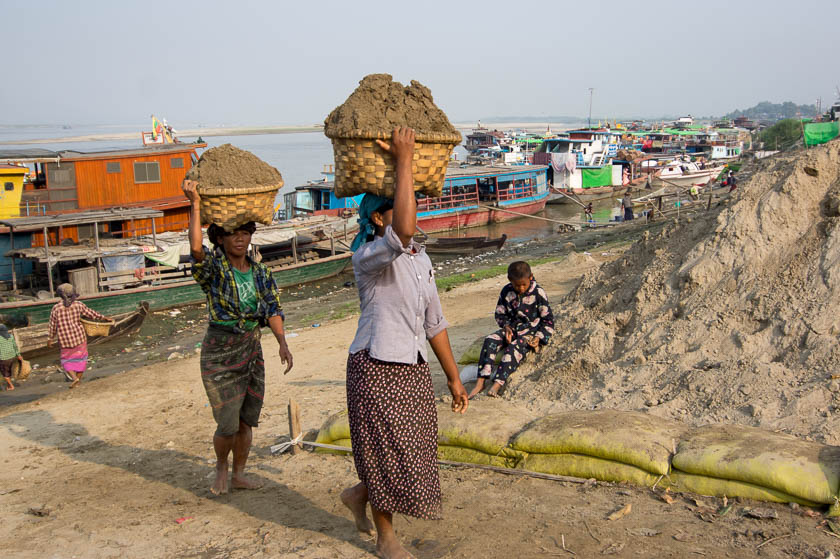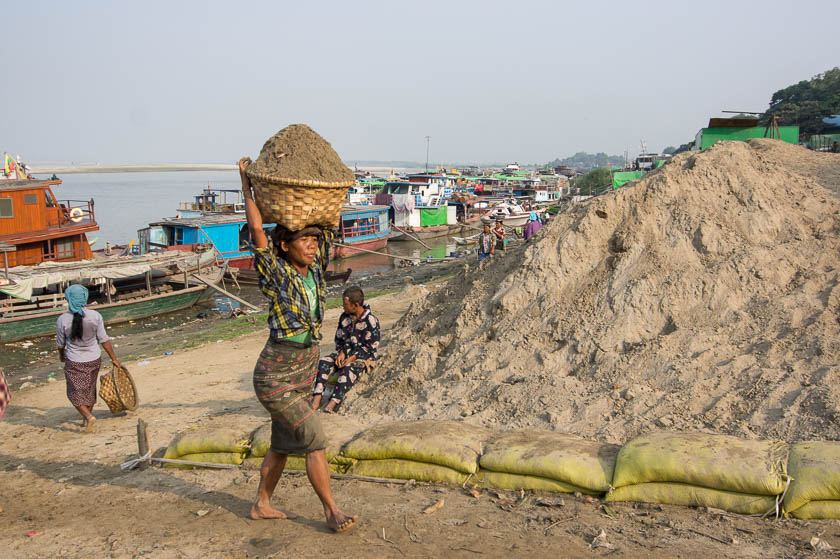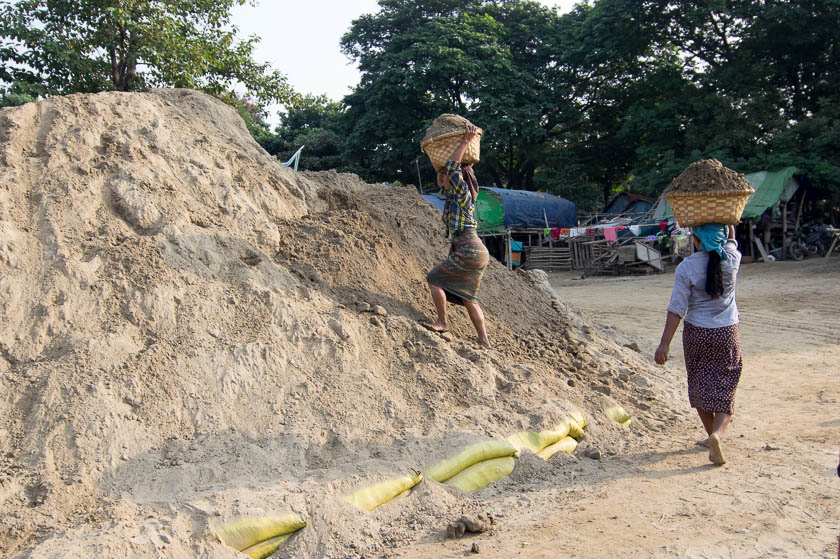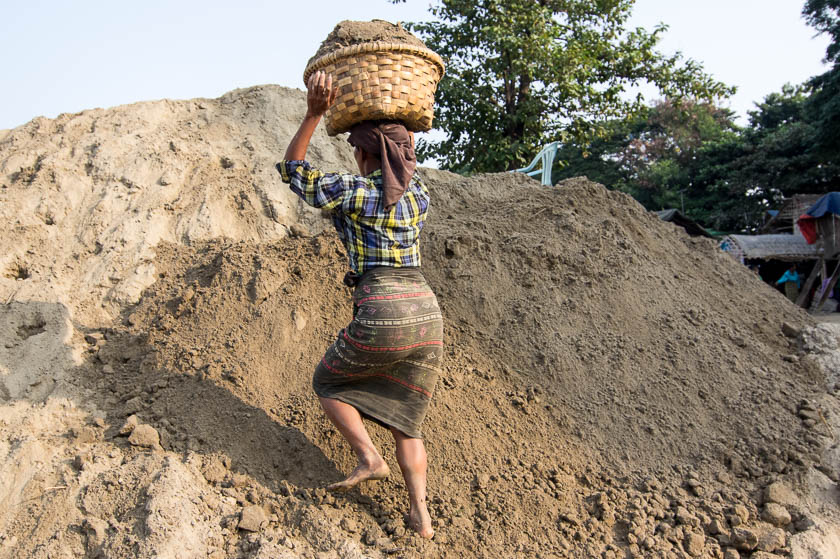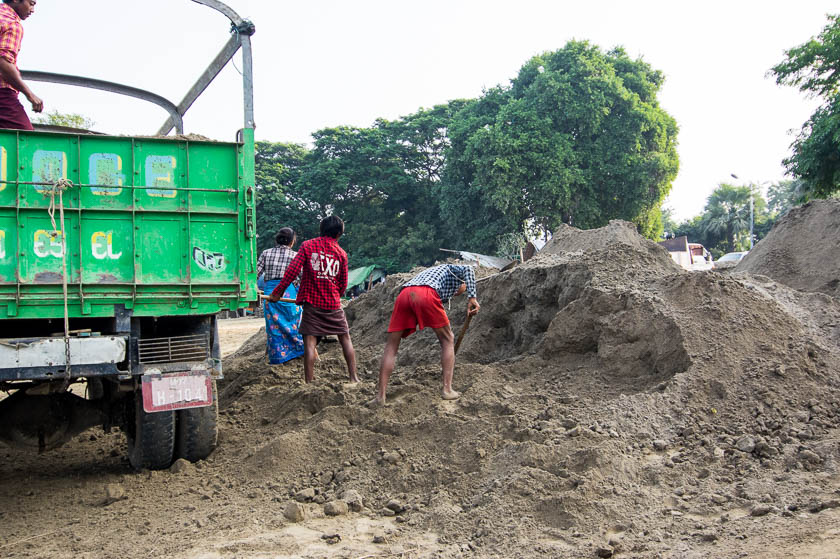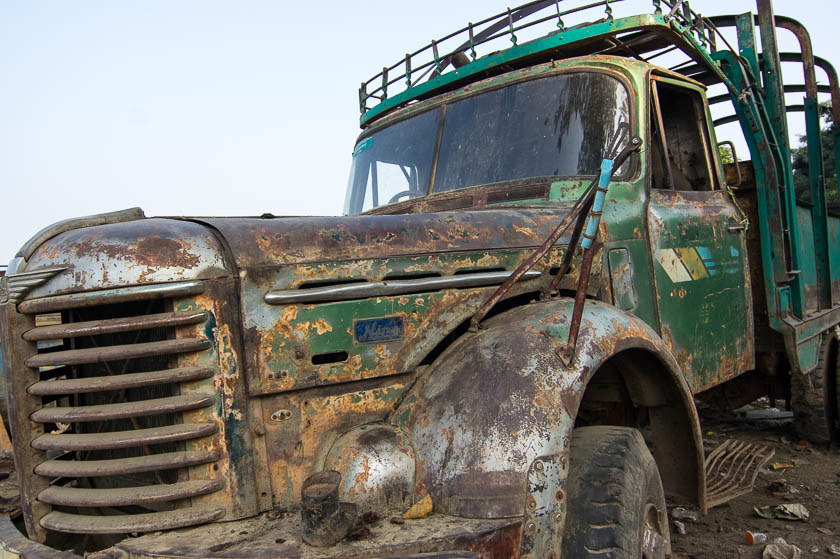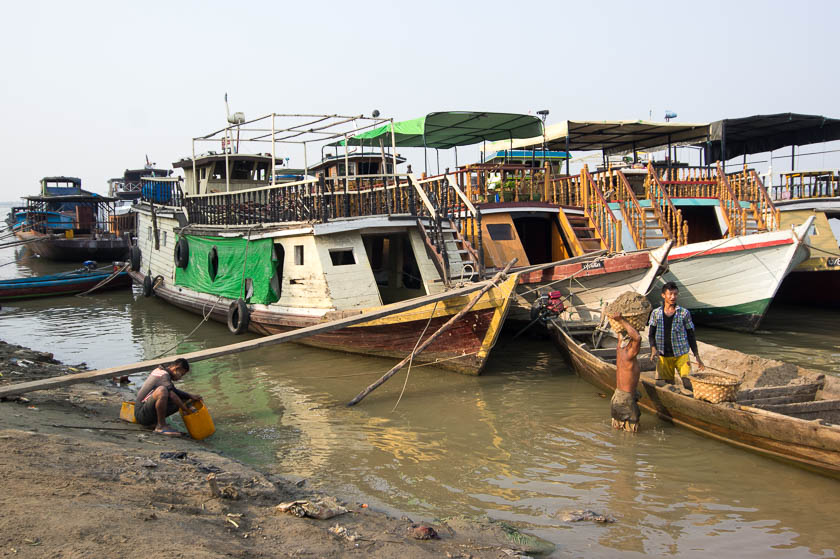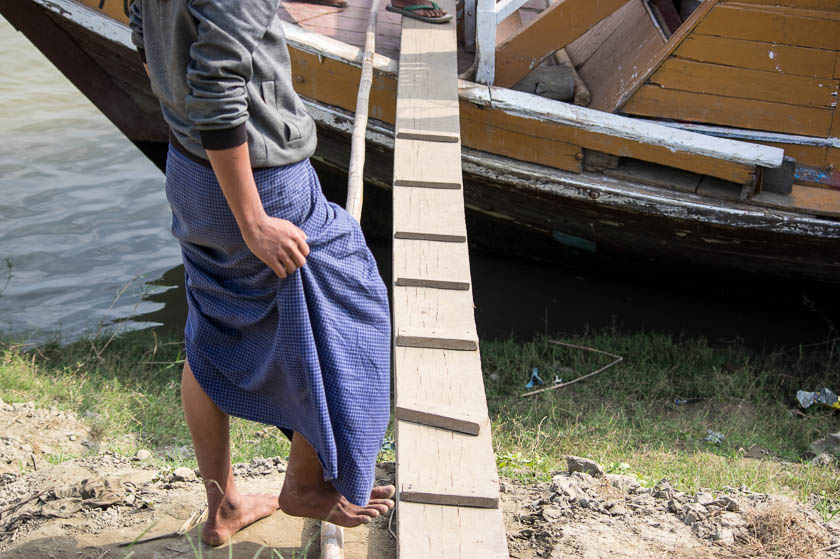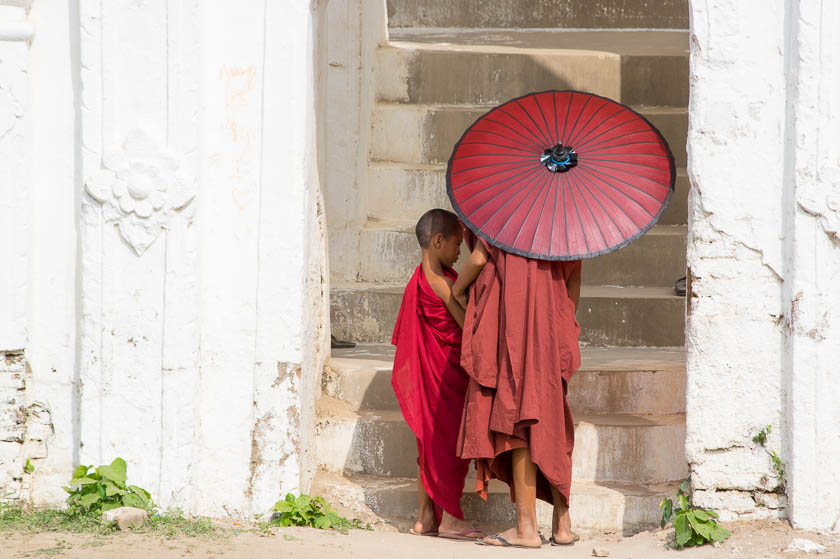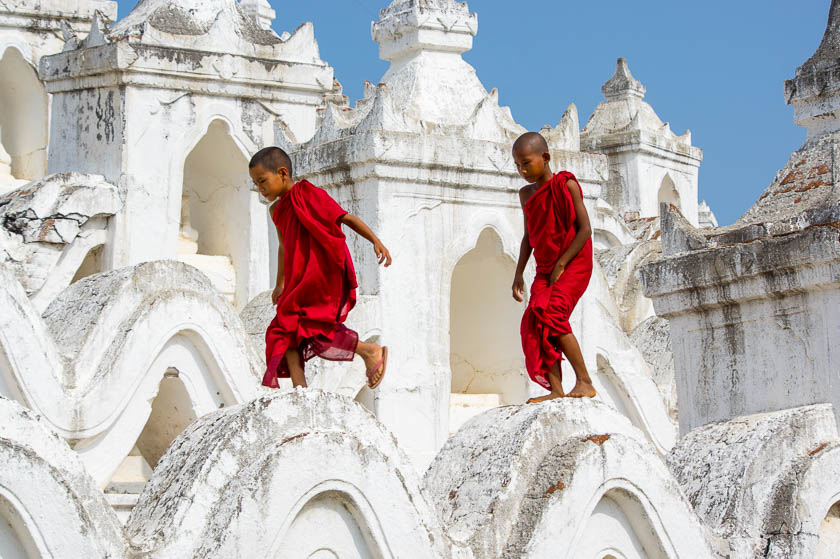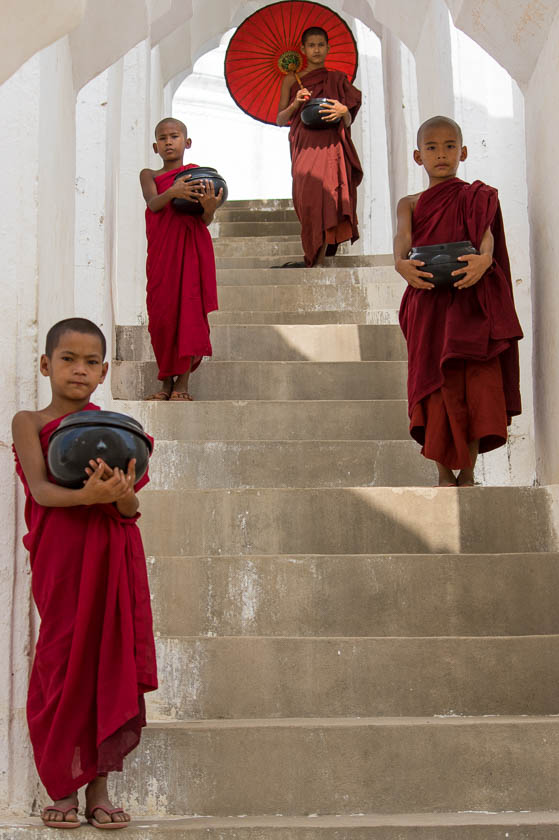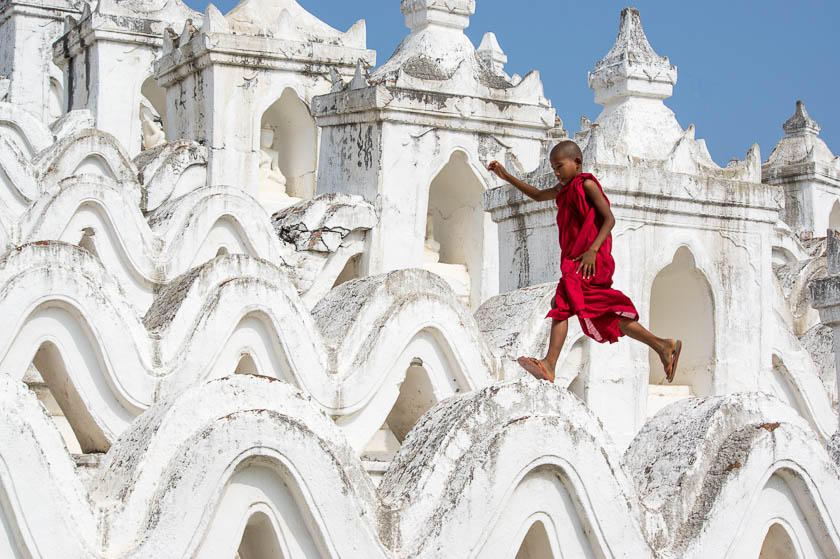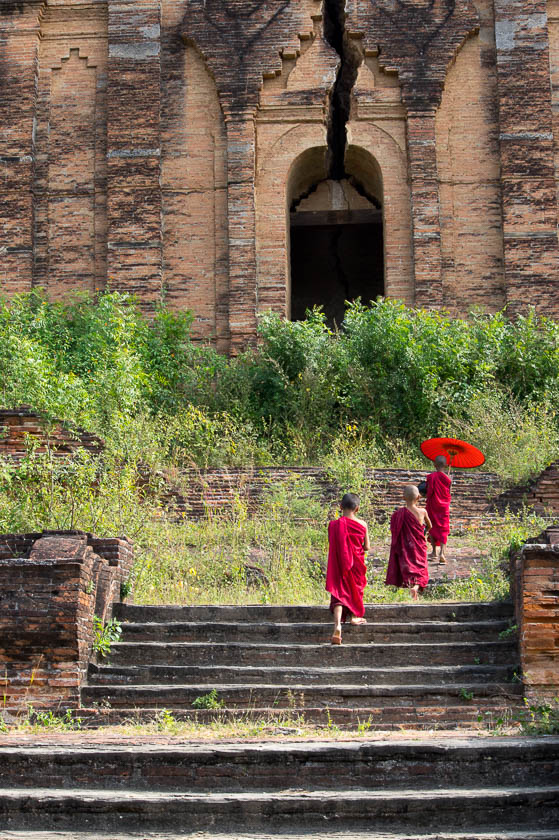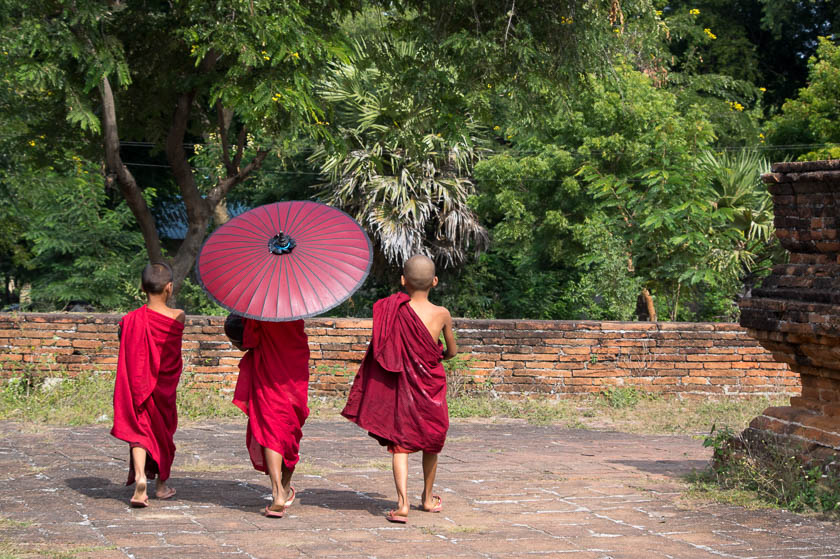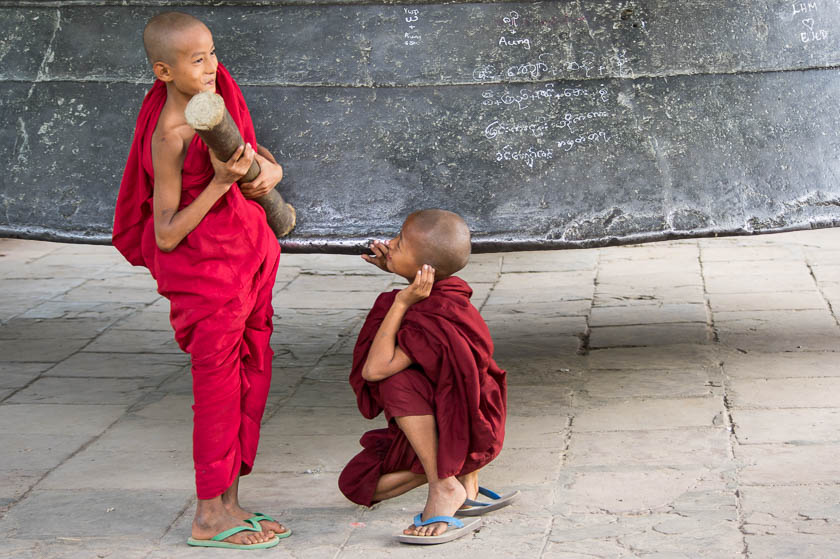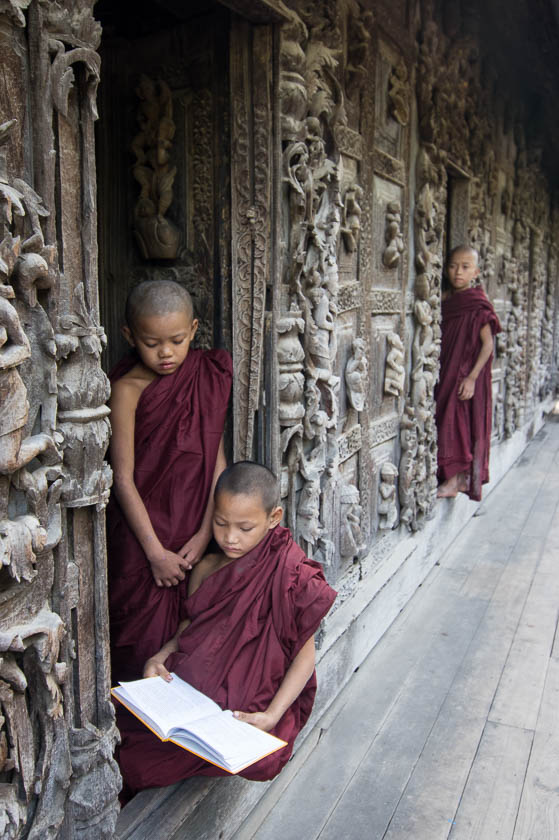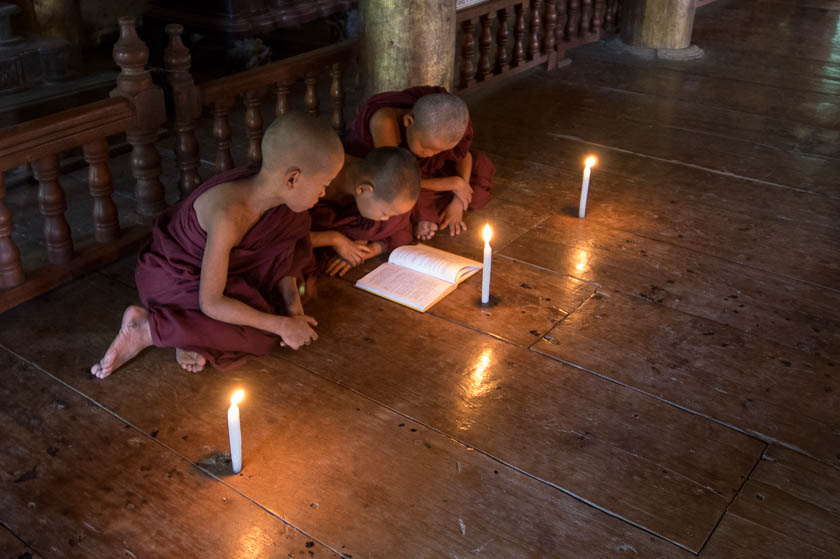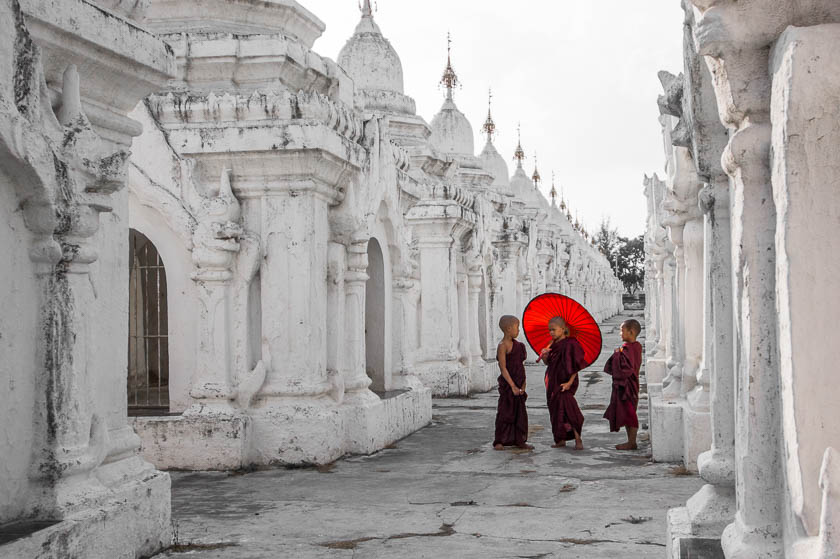Our lovely hotel in Mandalay is the Ayerwaddy View Hotel. This is the view from my balcony. (Note the mesh or netting – used to keep the seagulls out.) Also note the 15 or so monks across the street and the Ayerwaddy River in the background. The view from the balcony did not prepare me for what I would see across the street.
We walked across the street in the morning and Daniel (our in country guide) persuaded this young woman to demonstrate for us how she can carry four (heavy) water jugs on her head.
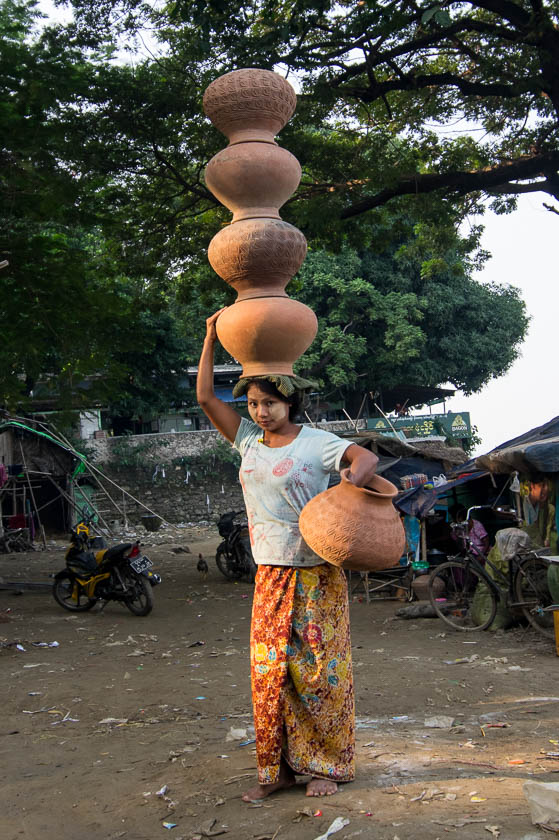 Yes, that child is her child asking to be picked up.
Yes, that child is her child asking to be picked up.
Zeke, our youngest and strongest travel companion said he would try a few water jugs. He stopped at two! I actually loved these jugs but there is no way I could transport one back home.
We then walked around this area on the shore of the river, which is home to some of the poorest people in Myanmar. Many families have pigs to be their garbage disposals. They bathe and wash clothes in the river, cook out in the open, and sleep in shacks. These were the friendliest people we met in Myanmar.
TRANSPORTING SAND
Most of the people who live in this area work and the work is often a family enterprise. Here is a process of getting and transporting sand for construction projects.
The first photo is of the small island across the river where the sand is finer than on the bank. It is dug up and loaded into canoes and then taken back to the main land bank.
Here some hardworking young men load the wet sand from the canoes into baskets. Then one person carries the basket on his or her head about half way up the bank.
Then, there is a “hand off” as the basket gets transferred from one person to another.
The second person (they were all women at this point) then carry the baskets up the hill and dump the sand onto a huge pile.
Then they go back for another load.
Meanwhile, men then shovel the sand into a huge truck and haul it away to be sold for construction projects.
After spending a while on the bank of the river, we were to board one of these riverboats to take the one hour cruise to Mingum, where there is a very large pagoda. We had been watching Burmese literally run up and down that wood plank on and off the boats. Yes, that is how we were going to board the boat. Fortunately two guys “created” a handrail. They each held one end of a pole! It was a bit scary but I did it. But guess what? We were to be on the fourth or fifth boat and between each were boards similar to the one you see in the second photo. Well, I am here writing about it!
Mingun Paya. Our boat took us to Mingun.
We went first to the wavy white Hsinbyume Paya. The “waves” represent the mountain ranges surrounding Mt. Meru, center of the Buddhist cosmos. The young novices were happy to pose for us especially to run from one wave to the next.
This is the great Mingun Paya, never finished because of an inauspicious earthquake putting a huge crack across the west entrance. It was to be the world’s largest pagoda.
This great bronze bell was to be hung in the Mingun Paya if it were finished.
This is an old monastery with elaborate wood carving.
This is the U Bein Bridge next to Amarapura Monastery. The bridge is made of teak posts, once part of the Inwa Royal Palace, which connected the new Amarapura Palace with the king’s favorite monastery. 